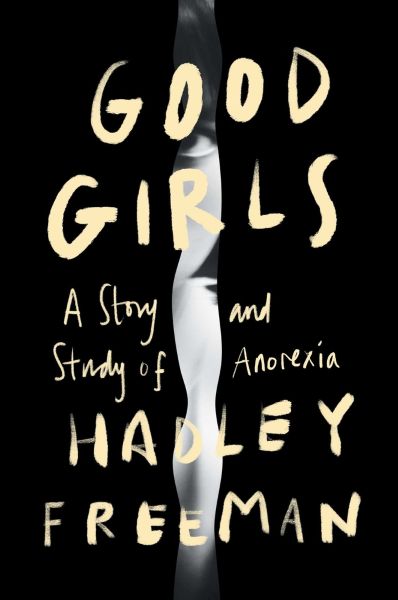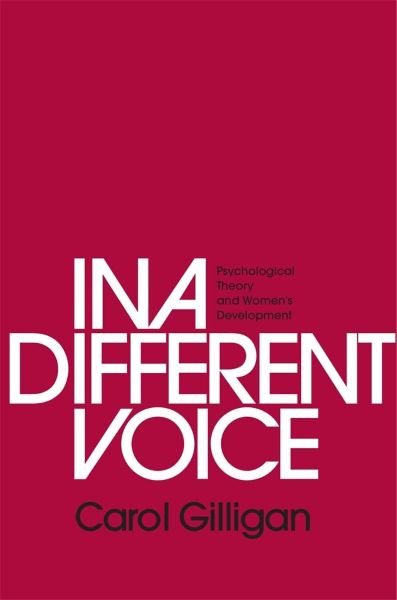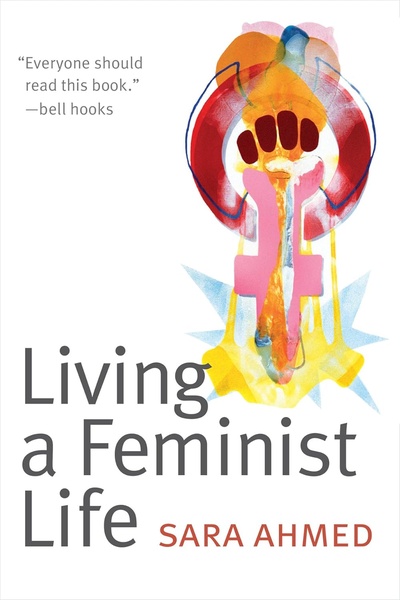Good Girls: A Story and Study of Anorexia
A memoir from bestselling 'House of Glass' author Hadley Freeman, recounting her battle with anorexia from ages 14-17 in psychiatric hospitals, tracking the recovery journeys of women she was hospitalized with 20 years later, and revealing the deep connection between eating disorders and the difficulties girls face coming of age. Called 'riveting' by The New York Times.

📝 Book Review
In 1995, Hadley Freeman wrote in her diary: “I just spent three years of my life in mental hospitals. So why am I crazier than I was before?” From ages fourteen to seventeen, Freeman lived in psychiatric wards battling anorexia nervosa. Her doctors informed her that her body was cannibalizing her muscles and heart for nutrition, but they could tell her little else: why she had it, what it felt like, what recovery looked like. For the next twenty years, Freeman lived as a “functioning anorexic,” grappling with new forms of self-destructive behavior as the anorexia mutated and persisted. “Good Girls” is not merely a memoir about illness but a profound investigative study—Freeman returns to the past, tracking down the women hospitalized with her, interviewing medical experts about treatment advances, attempting to understand this widely discussed yet poorly understood mental illness and what it reveals about the brutal truths of female coming of age.
Hadley Freeman is an American-British journalist and author, born in 1978 in New York to a Jewish family, moving to London with her family at age 11. She studied English literature at St Anne’s College, Oxford, where she edited the student newspaper Cherwell. Joining The Guardian in 2000, she worked on the fashion desk for eight years before becoming a columnist, writing for the paper for over two decades. In 2022, she moved to The Sunday Times, winning Broadsheet Columnist of the Year at the 2024 Press Awards. Her work has appeared in Vogue US and UK, New York Magazine, Harper’s Bazaar, and numerous other publications. Her most celebrated work is the 2020 “House of Glass: The Story and Secrets of a Twentieth-Century Jewish Family,” tracing her grandmother Sara and her three brothers’ lives in Poland, France, and America, uncovering long-buried Holocaust survival stories, becoming a Sunday Times bestseller published worldwide. “Good Girls” is her most personal, vulnerable, and courageous work, combining her journalistic investigative skills with survivor’s lived experience to create a work both profound and readable.
Anorexia is one of the deadliest mental illnesses, with the highest mortality rate among all psychiatric disorders, yet it’s simultaneously one of the most misunderstood. In popular imagination, anorexia is often reduced to “pretty girls not eating,” blamed on fashion magazines, social media, and “vanity.” Sufferers are perceived as shallow, narcissistic, attention-seeking. This stigmatizing understanding not only fails to help treatment but adds additional shame to patients, making it harder for them to seek help. Freeman’s primary purpose in writing this book is breaking these stereotypes, revealing anorexia’s true face: it’s not about vanity but control; not about appearance but deep-seated fear and pain; not a choice but a disease.
Freeman describes anorexia’s subjective experience with extreme honesty and nuance. For her, anorexia began at fourteen, almost overnight. She suddenly felt an overwhelming need to control everything she ate, to make her body smaller, lighter, more “perfect.” This need quickly became compulsion—she couldn’t stop counting calories, couldn’t stop weighing herself, couldn’t stop exercising. Food transformed from life’s nutritional source to enemy, every bite accompanied by enormous anxiety and guilt. Her weight plummeted, menstruation stopped, hair began falling out, hands and feet froze, her entire body covered in fine downy hair (the body’s attempt to stay warm). But even as her body obviously collapsed, her brain still told her she wasn’t thin enough, she needed to keep losing weight.
Freeman doesn’t shy away from anorexia’s horror. She describes hospitalization’s daily routine: forced feeding, eating every bite under nurse supervision, forbidden from using bathrooms after meals (preventing purging), daily weigh-ins, living with equally ill girls, simultaneously supporting and competing over who’s thinner. She describes the complex dynamics among anorexia patients—they understand each other’s pain yet fall into comparison and jealousy, because in anorexia’s logic, thinner means “more successful.” She describes the medical system’s limitations: doctors could force her to eat, could monitor her weight, but couldn’t change that voice in her brain, the one constantly telling her “you’re not good enough, you need to be thinner.” Treatment was more containment than cure—the goal was returning her weight to non-lethal levels, not truly understanding and addressing why she became ill.
After three hospital years, seventeen-year-old Freeman was “recovered” and discharged—her weight returned to medically acceptable range, she learned not to display anorexic behaviors in front of medical staff. But as she wrote in her diary, she felt crazier than before. Because she hadn’t truly recovered, she’d only learned to hide. For the next twenty years, she became what’s called a “functioning anorexic”—superficially she lived normally, had a successful career, had social life, but privately she was still controlled by obsessive thoughts about food and weight, still battling self-destructive urges. Anorexia mutated like a chameleon: sometimes manifesting as excessive exercise, sometimes as extreme compensatory behaviors after binging, sometimes as other forms of bodily control and punishment.
This “recovered but not healed” state is one of Freeman’s book’s most important themes. Medicine typically defines anorexia recovery as weight restoration and menstruation return, but this ignores ongoing psychological struggle. Many anorexia patients, even at normal weight, remain tormented by food anxiety, body hatred, and obsessive thoughts. They learn to perform “normal,” eating in public, avoiding suspicion, but inner pain doesn’t disappear. Freeman calls this state “recovery held together with duct tape”—from outside you look whole, but inside you’re still broken. This state can last years, decades, even a lifetime. It’s an exhausting way to live, requiring constant vigilance to resist disease recurrence while pretending everything’s fine.
To understand her experience and explore whether genuine recovery is possible, Freeman conducted extensive investigative research while writing this book. She interviewed leading experts treating anorexia, learning what medical understanding of this illness has progressed since her hospitalization. She learned some startling new findings: anorexia has significant comorbidity with autism spectrum disorders, many anorexia patients exhibit autistic traits like rigid thinking, need for rules and order, social difficulties; anorexia is closely related to OCD, many patients simultaneously have OCD or display obsessive-compulsive features; anorexia may be linked to abnormal metabolic rates, some people’s bodies respond differently to starvation, potentially partly explaining why anorexia is so difficult to treat.
Freeman also explores anorexia’s gender and age patterns. Though males develop anorexia too, 90-95% of patients are female. More importantly, anorexia almost always begins during adolescence—between ages 10 and 18. This isn’t coincidence. Adolescence is when girls’ bodies and social identities undergo dramatic transformation: their bodies begin sexual maturation, curves appear, menstruation arrives; societal expectations also change, from “child” to “woman,” meaning dealing with sexualization, objectification, and a whole set of norms about how women should look and behave. For many girls, this transformation is terrifying. Anorexia can be understood as a way to refuse growing up—by keeping the body pre-pubescent in its slenderness and flatness, by stopping menstruation, to delay or reverse the process of becoming a woman.
Freeman keenly observes that anorexia reveals the inherent dilemma of becoming female in patriarchal society. Girls are taught to be “good”—compliant, quiet, taking up little space, making no trouble. They’re taught to focus on appearance, as this is their primary value source. They’re taught to please others, especially men. But simultaneously, they’re told to be ambitious, successful, strong. These contradictory expectations create an impossible situation. Anorexia is in some sense a distorted solution to these contradictions: by controlling food and body, girls gain a sense of control and achievement; by becoming thin, they both conform to beauty standards and refuse femininity; by self-punishment, they both express anger and internalize it, avoiding becoming “bad girls.”
The title “Good Girls” is precisely an ironic comment on this dynamic. Anorexia patients are often “good girls”—academically excellent, rule-following, perfectionist, eager to please. Their illness is in some ways taking societal demands on women to extremes: be slim, then become emaciated; be disciplined, then control to the extreme; don’t trouble others, then disappear to the extreme. Freeman notes that when we praise girls for being “well-behaved,” “sensible,” “not picky eaters,” when we admire women’s self-control and slender figures, we’re actually reinforcing values that may lead to anorexia. Anorexia isn’t a deviation from normal values but the result of pushing normal values to pathological extremes.
One of the book’s most moving sections is Freeman tracking down the women hospitalized with her. Twenty-plus years later, she contacts several, learning their life trajectories. These stories are both heartbreaking and inspiring. Some women truly recovered—they built families, careers, learned to be at peace with food and bodies, though occasionally still hearing anorexia’s voice, they’re no longer controlled by it. Some women still struggle—anorexia evolved into other forms of addiction or mental health issues, recovery’s path rocky and repetitive. And some women didn’t survive—anorexia took their lives through heart failure, organ damage, or suicide.
These divergent outcomes reveal a brutal truth: anorexia recovery has no guarantees. Even the best treatment, most supportive families, strongest will cannot ensure recovery. Some patients recover, some don’t, and we still don’t fully understand why. This uncertainty is one of the disease’s most terrifying aspects—both for patients and their loved ones. It also exposes our medical system’s and society’s limited understanding of mental illness. We’re accustomed to thinking diseases have clear causes and cures, but for complex psychiatric disorders like anorexia, reality is far less simple.
Yet Freeman’s book is ultimately a story of hope. In the writing process, talking with survivors, discussing with experts, re-examining her own experiences, Freeman herself underwent a deeper recovery. She learned to distinguish between her own voice and anorexia’s voice. She learned self-compassion—understanding her illness wasn’t her fault, not evidence of weakness or vanity, but her way of trying to cope with unbearable pain. She learned to accept herself in imperfection—she may never be completely “cured,” may always have some vulnerability, but that doesn’t mean she can’t have a full, meaningful, joyful life.
Freeman’s core message to readers is: life can be enjoyed, not merely endured. For those long battling anorexia or other eating disorders, this may sound incredible. When every meal fills you with anxiety, when you feel disgust every time you look in a mirror, when your brain is occupied by obsessive thoughts about food and weight, “enjoying life” seems an unreachable concept. But Freeman insists recovery is possible—not perfect, struggle-free recovery, but a recovery where life becomes bearable, then enjoyable. This requires time, support, therapy, sometimes medication, always enormous courage and patience. But it’s possible.
This book is also a testament and solidarity with America’s nearly 30 million eating disorder sufferers (global numbers much higher). Eating disorders including anorexia, bulimia, binge eating disorder affect people of all ages, genders, races, and social classes, though young women remain the highest-risk group. These diseases often occur in silence—patients hide from shame, families overlook from misunderstanding, society avoids from stigma. Freeman’s public telling breaks this silence. She demonstrates that a public figure, successful journalist, talented writer can be, and was, a mental illness patient and survivor. Her story makes other patients feel seen, understood, less alone.
From a feminist perspective, “Good Girls” is profound critique of body politics. Though Freeman doesn’t explicitly label her work feminist, her analysis is essentially feminist. She reveals how anorexia is inseparable from patriarchal society’s control and objectification of women’s bodies. Women’s bodies never belong to themselves—they’re disciplined and controlled by fashion industry, medical institutions, male gaze, paternalistic protection, state reproductive policies. Anorexia is an extreme form of this external control internalized—women become their own regulators, executing discipline more severe than any external force.
Freeman also explores medical patriarchy’s manifestation in anorexia treatment. She recalls treatment’s humiliations: forced to undress for weighing, monitored by nurses using toilets, losing privacy and autonomy, treated as disobedient bodies needing control rather than thinking, feeling persons. Though medical staff’s intentions were saving lives, methods were often paternalistic and dignity-stripping. Worse, traditional treatment primarily focuses on weight restoration, reducing women’s bodies to numbers needing to be reached, rarely addressing the psychological, social, and structural factors causing illness. This treatment paradigm itself reflects society’s reduction of women—viewing them as bodies needing shaping into appropriate forms rather than complete persons needing understanding and support.
The book also touches on class and privilege issues. Freeman came from a middle-class family able to afford private psychiatric hospital costs (though extremely expensive), able to access professional treatment. She acknowledges this is privilege—many people with eating disorders lack access to such treatment, either for economic reasons or because their illness isn’t recognized (eating disorders are often overlooked in communities of color, partly because stereotypes view this as a “white girl disease”). Treatment accessibility and quality closely correlate with economic status, meaning recovery opportunities are also unequally distributed.
Freeman’s writing style makes this potentially very heavy book readable and sometimes even amusing. She uses “sharp storytelling, solid research and gentle humor” (The Wall Street Journal) to tell her story. She doesn’t avoid pain and darkness but doesn’t wallow in it either. She describes facts with journalist’s clarity and precision, analyzes meaning with survivor’s insight, creates compelling narrative with writer’s skill. Her humor isn’t flippant but a coping mechanism, a way to maintain humanity and dignity in despair. This tonal balance makes the book both honest and hopeful, both serious and accessible.
The New York Times called this book “riveting,” an apt assessment. This is a hard-to-put-down book—partly because of the story’s inherent drama and emotional intensity, partly because of Freeman as narrator’s honesty and insight, partly because of the theme’s universal resonance. Even readers who haven’t personally experienced eating disorders likely know someone who has, or at least are familiar with struggles with body image, food anxiety, perfectionism, and control. Freeman’s story is personal, but the themes it touches are collective, especially for women.
This book also has special relevance for Chinese readers. Though eating disorder statistics in China are relatively scarce (partly due to underdiagnosis and underreporting), evidence suggests these diseases are rising among young Chinese women, especially in urbanized, Westernized environments. Chinese women face contradictory expectations similar to the West: be successful but modest, beautiful but dignified, modern but traditional. Social media is flooded with pathological body standards like “A4 waist,” “coins on collarbones,” “touching belly button backwards.” Meanwhile, stigma around mental health issues prevents many patients from seeking help. Freeman’s book provides a framework for understanding these issues and a message of hope: recovery is possible, talking about it isn’t shameful but courageous.
Ultimately, “Good Girls” is a book about resilience and self-acceptance. Freeman endured terrible suffering—the disease’s pain, treatment’s pain, battling recovery’s pain. But she survived, not just survived but created a meaningful life and career, able to tell her story and help others. This doesn’t mean her life is perfect or she’s “beaten” anorexia—she honestly acknowledges it’s an ongoing process, she still has difficult days. But she found a way to coexist with the disease without letting it define or control her life. She learned to listen to her authentic voice, not the disease’s voice. She learned to be kind to her body, not treat it as an enemy.
For those battling eating disorders, this book is a powerful reminder: you’re not alone, your pain is real, you deserve help and recovery, your life can get better. For loved ones caring for patients, this book provides a window into patients’ inner worlds, helping understand this illness isn’t about vanity or attention-seeking but profound pain and fear. For all readers, this book is an invitation to critical thinking about how our society treats women’s bodies, defines beauty, understands mental illness.
Hadley Freeman has written her most personal experience with tremendous courage and skill, creating a work that’s simultaneously memoir and investigative study, personal testimony and social critique. “Good Girls” is essential reading for anyone concerned with mental health, women’s rights, body politics, or simply human suffering and resilience. It reminds us that the greatest courage isn’t never falling but getting up again and again; the deepest freedom isn’t perfection but accepting imperfection; the truest recovery isn’t eliminating all pain but learning to coexist with it and finding joy and meaning. For those still struggling in darkness, Freeman’s book is a lamp illuminating the path to hope.
Book Info
Related Topics
🛒 Get This Book
 Buy on Amazon
Buy on Amazon Related Books
Book Discussion
Share your thoughts and opinions on this book and exchange insights with other readers
Join the Discussion
Share your thoughts and opinions on this book and exchange insights with other readers
Loading comments...


